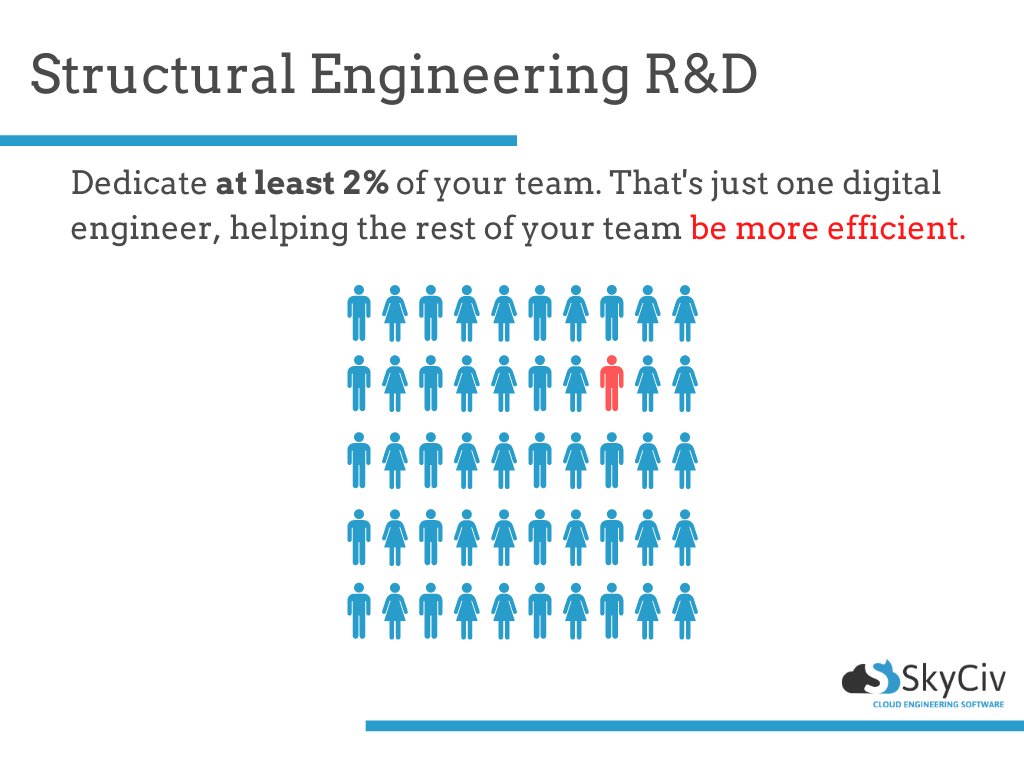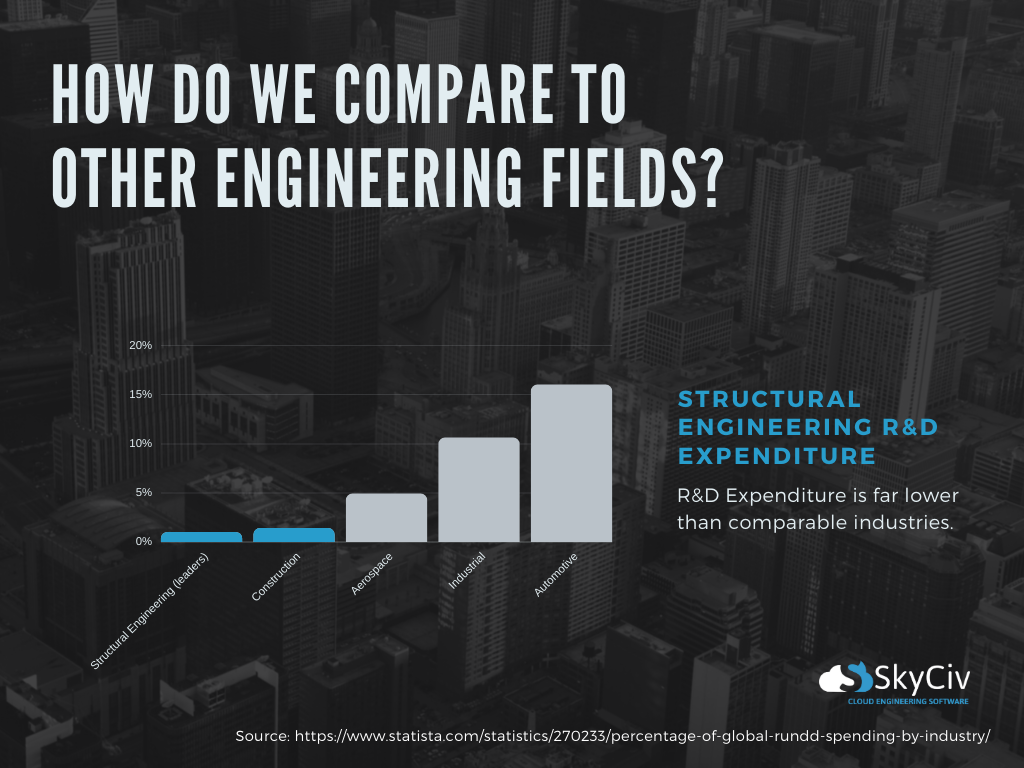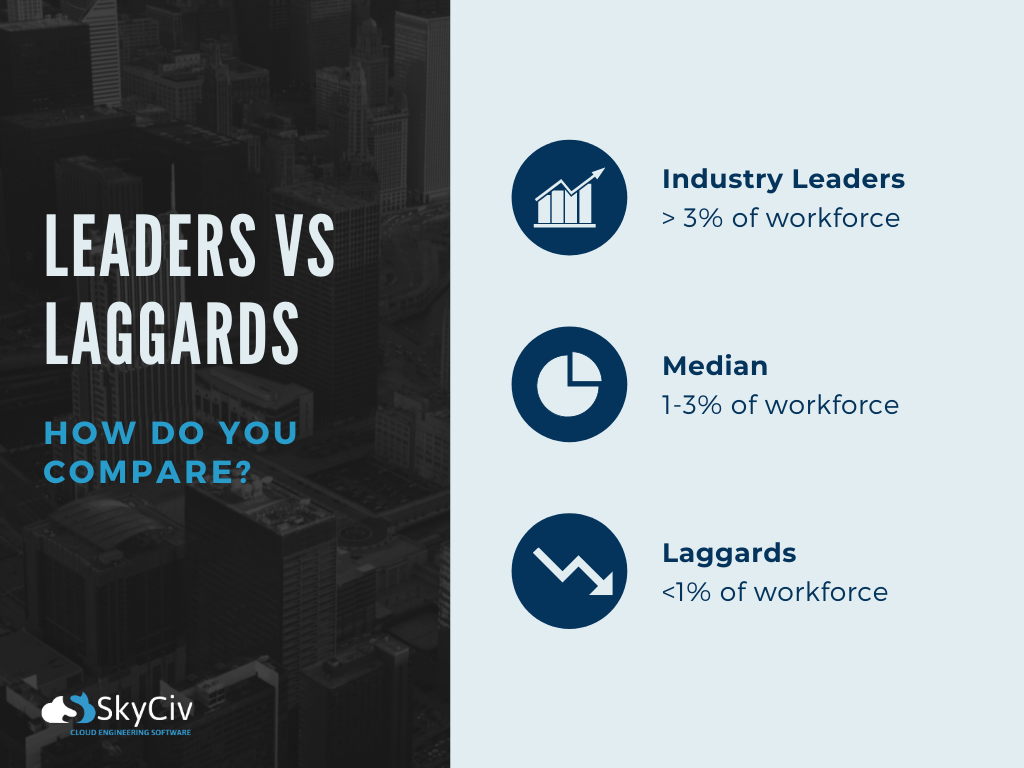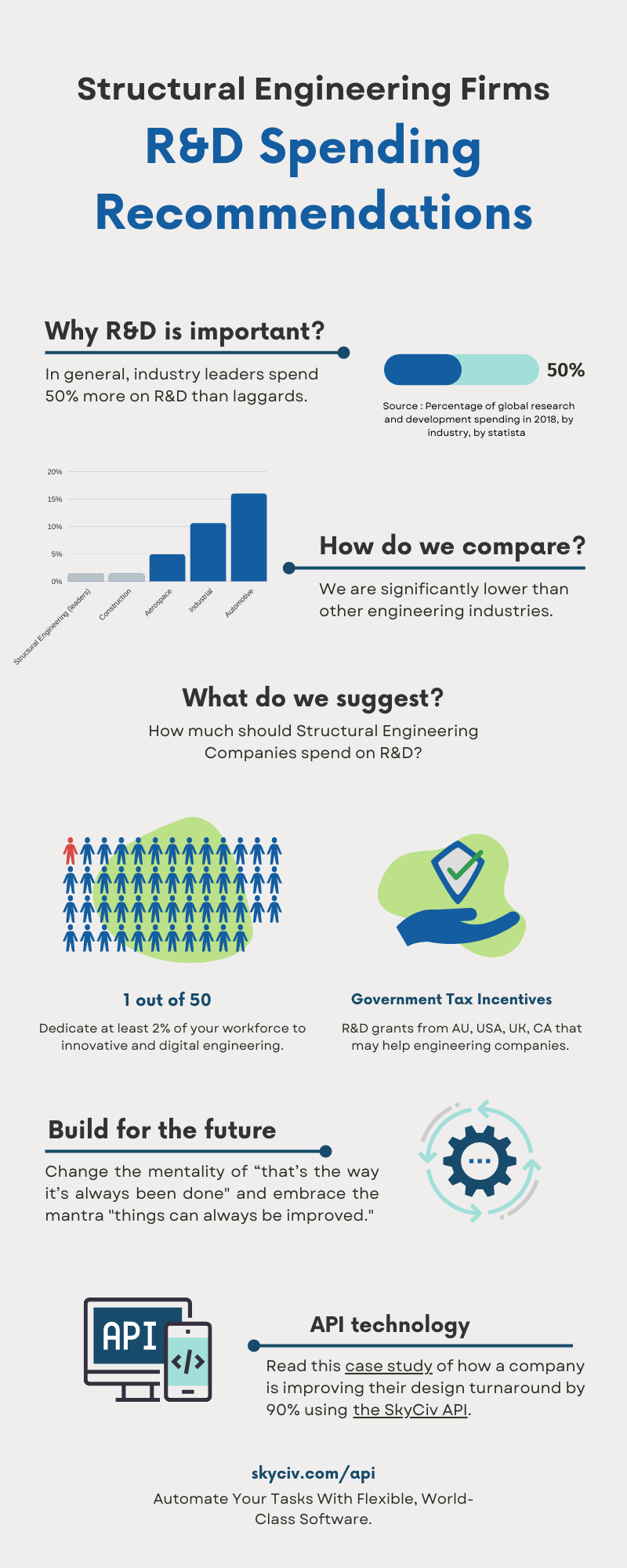Structural Engineering is an industry that, relative to other industries, hasn’t really innovated much. FEM and computers came in around the 70s and 80s and completely revolutionised the way we design. But beyond that, there have only been smaller improvements and changes. But as a consulting firm, trying to meet deadlines and client needs, we need to find time to innovate and invest in improving the way we design. In this article, we’ll explore why it’s important, how much you should be spending and how you compare to other consulting firms. I will be mainly speaking through the context of software and workflow innovation.
Why is it important?
Facebook invests over 13%, Google over 16% and Amazon now invests more than 28% in Research & Development (R&D). Is it any surprise that they are the leaders in their industries? While these tech companies differ from engineering or consulting companies, the concept is the same – there is a direct correlation between R&D and performance. There’s plenty of evidence to back this up, with clear correlation between industry leaders spending 50% more on R&D than laggards. In another study of more 272 firms in 35 different industries over a span of 19 years, confirmed R&D spending was positively correlated to revenue growth and return on assets, or investments (ROA).
But how exactly do they correlate? One study puts the optimal level of R&D expenditure at 6.39% of your revenue, where at this inflection point, your ROA starts to decline:

Source : Exploration of Relationship between Innovation, IT and Performance
We completely understand the difficulties and need to focus on core business activities and client needs. This is our bread and butter, and as structural engineers, we’re usually pressed for time as it is. But we cannot neglect spending time and attention on creating more efficient ways of doing things. Otherwise, things will never get easier and innovation will stagnate. With so much competition in the world, if you aren’t working on it, it’s highly likely your competitor already is.
So in short, spending on effective R&D has the following benefits:
- Gain a competitive advantage
- Improve your ROA
- Less stress on engineering team, higher employee satisfaction
- Faster service to clients
How much should Structural Engineering Companies spend on R&D?
Let’s compare the optimal R&D of 6.4% with what current leading consulting firms are allocating to R&D. Thornton Tomasetti is arguably one of the most high performing consulting firms in our industry working on some of the most high profile projects in the world. With approximately 1,400 employees, they have a dedicated digital engineering team, CORE Labs and CORE Studio with more than 25 employees, which at bare minimum is 1.5% of their headcount (they also spend on Hackathon’s and AEC tech events). TTW is an Australian mid-sized (220 employees) with a team of 5 engineers working on digital solutions – representing about 2.3% of their workforce. Obviously not all firms have the capability or resources to innovate at this scale, but the percentages should be somewhat comparable. Although this is still significantly lower than optimal R&D rates, it’s a good start.
We also speak to a lot of Construction Tech and Design technology companies. Their rate of R&D is extremely high, of around 15%. These companies are also working on automating the design process, to streamline the design process, particularly for smaller, repetitive structures. Some of this technology is quite advanced and could completely bypass or change the way we design.
What do we suggest? At the bare minimum, dedicate at least 2% of your workforce to innovative and digital engineering, to help the rest of your 98% workforce be more effective at your core business. In a 50-person company, that means at least one dedicated employee.

So a company of 80 should have 1-2 dedicated digital engineers at a minimum, helping their engineering team to be more efficient in any aspect it can, which in turn will drive growth, profitability, ROA, and business longevity. These are only the measurable stats, but what about the indirect benefits? Digital engineers will help foster an innovative culture, increasing your company IP (and therefore company valuation) and improving client service with faster, more effective designs. Sounds pretty good for just 1/50th of your team.
Even then, we are significantly lower than other engineering industries:

Government R&D Tax Incentives
Many governments offer grants and rebates for R&D, because they recognize the value in it. They know, investing in R&D will boost their economy and country’s performance in the long run (an increase in R&D expenditure by 1% causes an increase of real GDP growth rate by 2.2%, source: R&D Expenditure and Economic Growth). It’s no different for companies. I’m not familiar with each country’s incentives, but in general these grants allows you to claim back a percentage of that employees salary in tax concessions for R&D purposes. Here are a few R&D grants that may help engineering companies such as yourself:
Australia – R&D Tax Incentive
USA – R&D Tax Credit
UK – R&D Tax Relief
Canada – Scientific R&D Tax Incentive among other R&D Incentives
If all major Governments are backing and supporting R&D, clearly there’s a benefit. Government is putting their money where their mouth is, we should be doing our part to strengthen our companies and economy.
Build for the future
As engineers, we’re given the responsibility to build infrastructure to last decades. We forward think, and plan to ensure the serviceability of what we design.
We need to change this mentality of “that’s the way it’s always been done”. If we keep thinking this way, then our deadlines, that time crunch, is never going to improve. “We don’t have time” is no longer an excuse. The reason we don’t have time is because we’re not changing or improving our workflows!

So what next?
I hope this article helps stress the importance and significance of why R&D is so important. 3 things you can do to start:
- Manager/Decision Maker? Empower your digital engineer (if you have one) – take him/her off traditional structural design and have them focus on a solution for a single problem that your engineering team experiences. Give them the opportunity to showcase their solutions on monthly meetings or with recorded demos.
- In Sydney? Come meet out team or join our next Hackathon, connect with me on LinkedIn!
- Want a Demo? Get in contact with us for a Lunch and Learn
- Read More? Read this case study of how a company is improving their design turnaround by 90% using the SkyCiv API

CEO and Co-Founder of SkyCiv
BEng (Civil), BCom



